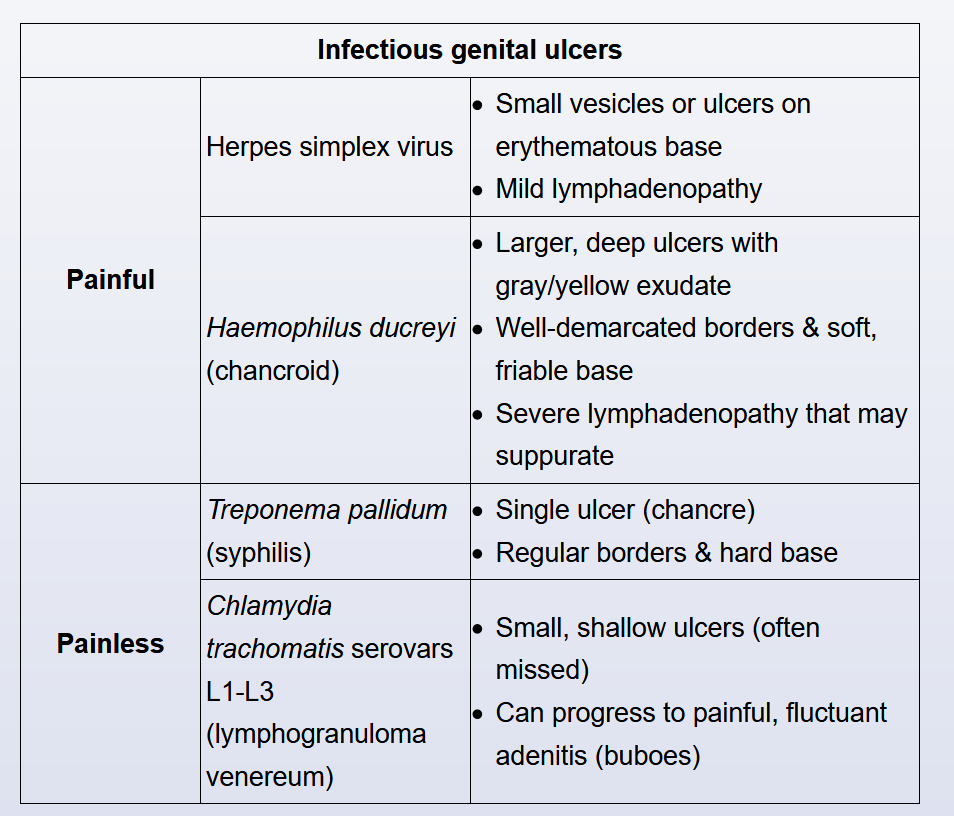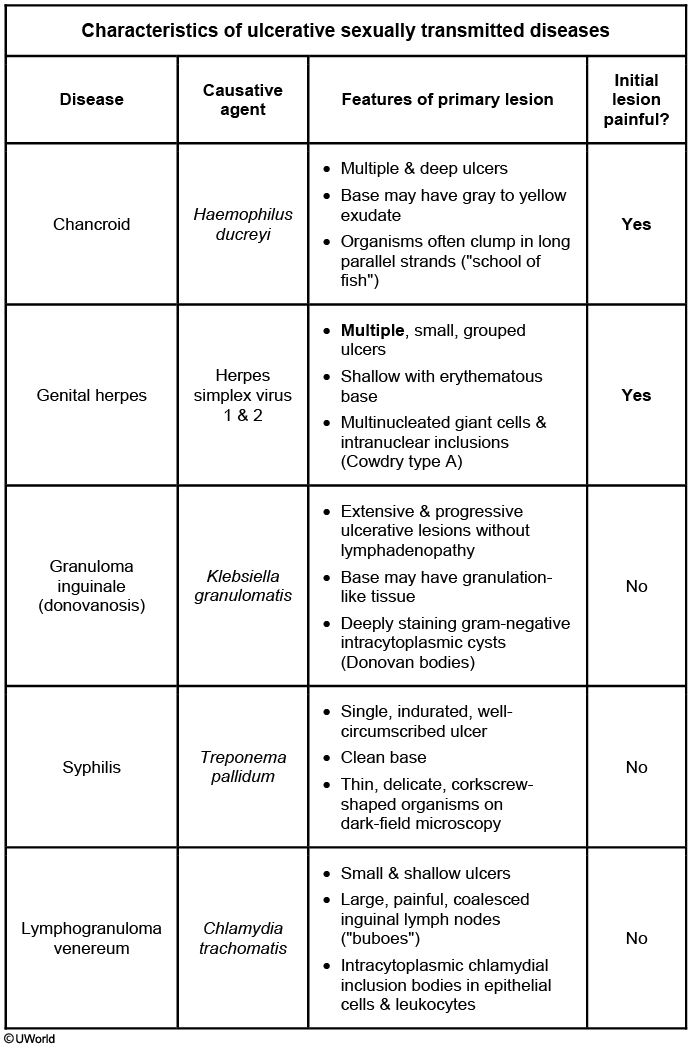genital ulcers
- related: ID
Patients with multiple sexual partners and substance abuse are at high risk for sexually transmitted infections. This patient has classic symptoms of primary syphilis - bilateral inguinal lymphadenopathy and a painless genital chancre. Syphilitic chancres form at the site of direct inoculation with Treponema pallidum. After exposure (3-60 days), patients develop a single papule that turns into a shallow, painless, nonexudative ulcer with indurated edges. Chancres are exceedingly infectious, with rates of T pallidum transmission as high as 30%. Most chancres resolve spontaneously in 6-8 weeks (if untreated), but the systemic spread of T pallidum results in continued infection.
Behçet syndrome, chancroid, and herpes genitalis are usually characterized by multiple, painful genital lesions (not a single, painless lesion). Chancroid, caused by Haemophilus ducreyi, is most commonly found in developing regions but is rare in the United States. Behçet syndrome is thought to be a vasculitis and is marked by recurrent oral aphthous ulcers, often with significant systemic manifestations (including genital ulcers).
Granuloma inguinale is caused by Klebsiella granulomatis and is marked by the formation of extensive, progressive, and painless genital ulcers, usually without lymphadenopathy. Granuloma inguinale is seen primarily in India, Guyana, and New Guinea. In the United States, <100 infections occur annually, most in patients who have traveled to these countries.
Chancroid
This patient's history of unprotected sexual encounters and multiple painful, purulent ulcers with tender inguinal lymphadenopathy raise suspicion for chancroid (Haemophilus ducreyi infection).
H ducreyi is a highly infectious, gram-negative rod and a leading cause of genital ulcers in Sub-Saharan Africa, Southeast Asia, and Latin America. Chancroid is uncommon in the United States; however, it may be under diagnosed as it requires special culture media not widely available. H ducreyi is thought to be spread through microabrasions on the skin during sexual intercourse.
After a 4- to 10-day incubation period, chancroid progresses from erythematous papules to pustules and then erodes into deep, painful, well-demarcated ulcers with erythematous bases often covered by a purulent exudate. Painful lymphadenitis (often with the formation of buboes, which may become suppurative) is common, especially in men.
A definitive diagnosis is difficult; therefore, a probable diagnosis is made if a patient has a typical presentation and if herpes simplex virus and syphilis are ruled out. Treatment with azithromycin or ceftriaxone is curative.

